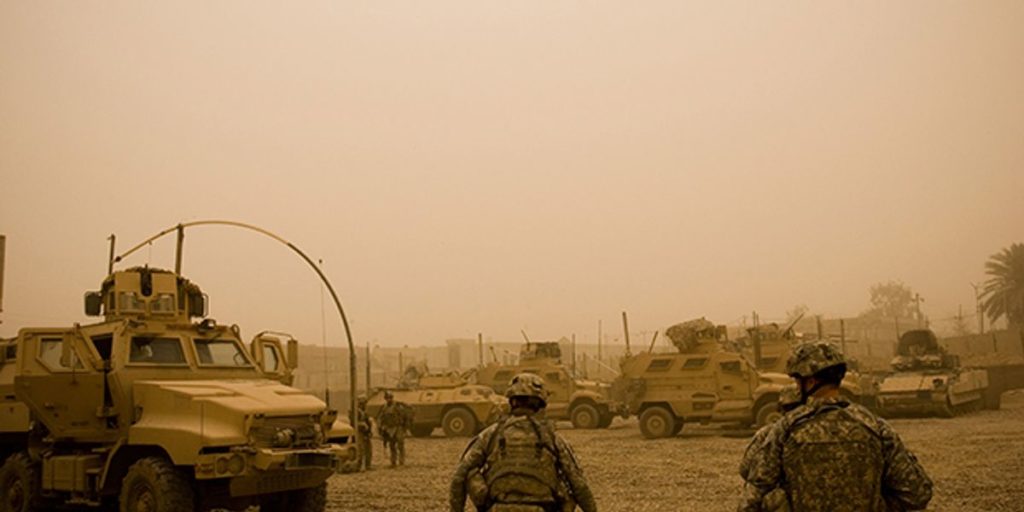Life and death on the roads of Iraq and Afghanistan often depend on the eyes and intuition of soldiers just a few years out of high school. Most IEDs are found today by a soldier peering through a thick Lexan window of a massively armored truck and noticing something amiss.
“You won’t find the IED itself,” explains a U.S. Army counter-IED trainer, in an interview at Camp Speicher in Tikrit, Iraq. “You look for other indicators. Trash right after a route clearance. Disturbed soil. An area strangely devoid of activity, or a heavily laden vehicle with no occupants. A donkey cart by itself—it’s somebody’s livelihood, so why is it abandoned? Why is no one there?”
Over the past year in Iraq, military patrols guided by local people, often former insurgents, have uncovered countless thousands of IEDs. The locals are paid to reveal where the bombs are.
Soldiers travel the roads in RG-31s, MRAPs, convoy trucks, and Buffaloes, which have a big robotic arm that can be operated from inside to paw through roadside junk. Many of the vehicles are also outfitted with a Gyrocam, a gyrostabilized telescopic camera system that lets them scrutinize, on a monitor in the truck, suspicious roadside objects from hundreds of meters away. The system can be switched to one of three different bands: visible light, infrared, and thermal (the thermal mode is useful for turning up people hiding at night), and it costs more than $500 000. It is used on drone aircraft such as Predators as well.
Other technologies also help with detection. A vehicle called a Husky has a powerful magnetometer that detects buried metal-containing objects, such as pressure plates, crush wire, and artillery rounds. At the moment of detection, though, the driver is directly above the object. To protect the driver as much as possible in a blast, the Husky has a cast-metal suspension and a harness restraint system designed for a helicopter. Those features have let drivers walk away after being blown 20 meters in the air.
Drone aircraft also sometimes spot evidence of IEDs or even catch insurgents in the act of installing them. In tactical operations centers all over Iraq you can see video from Warrior, Shadow, Predator, or Hunter aircraft playing out on flat-panel monitors in real time. Mostly, the feeds show empty or cluttered roads and suggest the immensity of the detection challenge.
Nevertheless, a special C-IED U.S. Army task force called ODIN (for observe, detect, identify, neutralize) has for more than two years been using a small fleet of piloted and drone aircraft to monitor the main supply routes in Iraq. A New York Times report in June said the task force had about 300 people and 25 aircraft assigned to it. When they spot people placing IEDs, ground controllers feed the information to quick-response combat teams, with often fatal results for the bombers.
In an interview with the newsletter Defence Systems Daily last November, Maj. Gen. James E. Simmons said that as of August 2007 the program had resulted in the deaths of 233 IED emplacers, the injury of 48 others, and the detainment of 260. To put those numbers in perspective, in a typical month a single turbulent province like Salah Ad Din could, until recently anyway, record more than 800 IED incidents.
For the record, most of the armored vehicles listed above, as well as the Gyrocam and ODIN, were all at least partially funded initially by JIEDDO.


